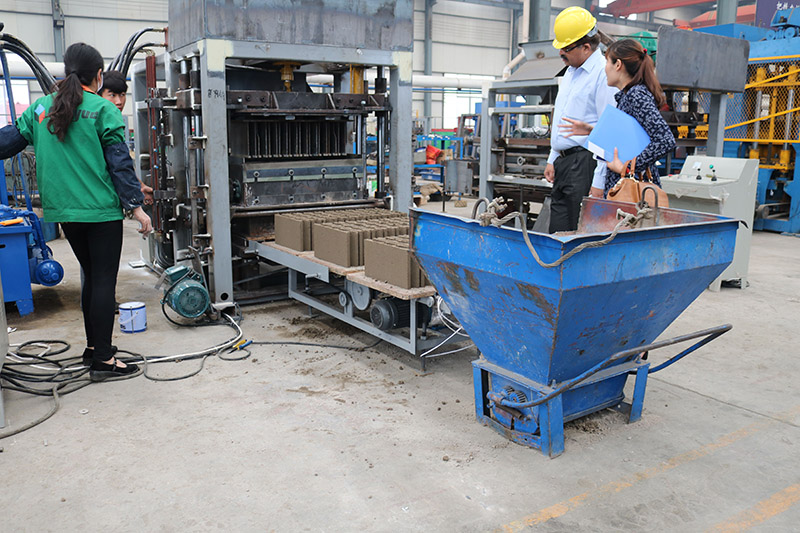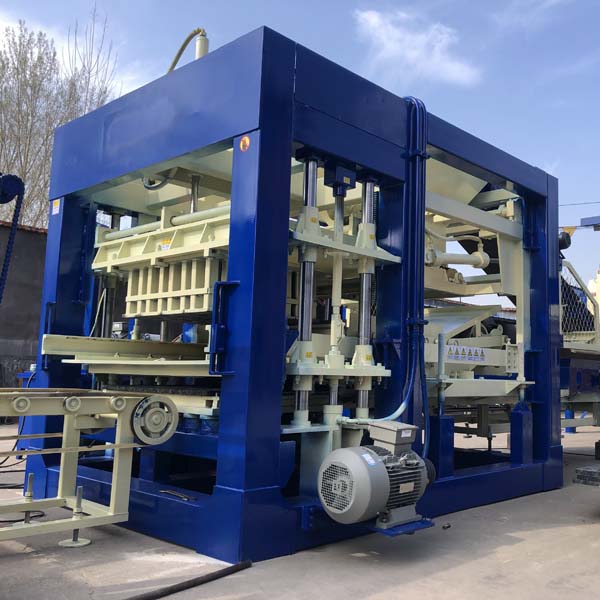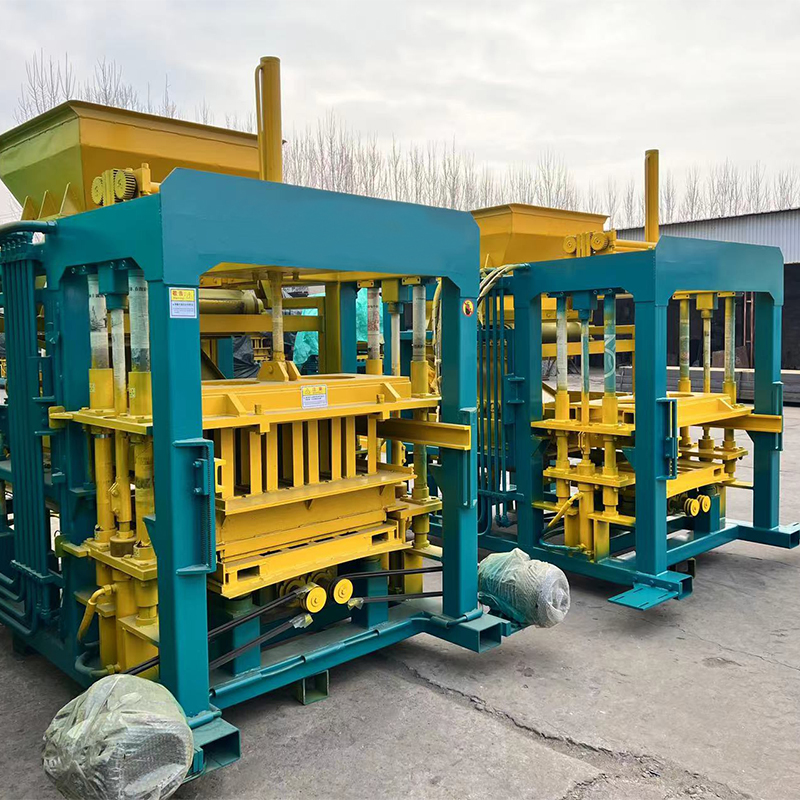Kenya, a vibrant nation situated in the eastern part of Africa, has been experiencing steady economic growth in recent years, fueled by various development initiatives and technological advancements. Among these advancements, the integration of brick-making machines into the local economy has been a significant factor in propelling Kenya’s construction and manufacturing sectors forward.
Integrating Brick-making Machines into the Local Development Landscape in Kenya
This essay delves into how brick-making machines fit into the broader development narrative of Kenya, exploring their role in enhancing economic growth, creating employment opportunities, and fostering technological innovation.
Firstly, the integration of brick-making machines into the Kenyan economy is a crucial aspect of industrialization and modernization. As the country strives to diversify its economic base and reduce reliance on traditional agricultural sectors, the manufacturing industry, including brick production, has become a vital component of Kenya’s growth strategy. Brick-making machines, with their ability to produce bricks quickly and efficiently, have become a key tool in meeting the increasing demand for building materials in the construction sector.
Moreover, the brick-making machines contribute significantly to job creation and income generation. The operation and maintenance of these machines require skilled labor, providing employment opportunities for local communities. This not only helps to reduce poverty and income inequality but also fosters social stability and cohesion. As the construction industry expands, so does the demand for skilled workers, creating a virtuous cycle of economic growth and employment generation.
Furthermore, the introduction of brick-making machines spurs technological innovation and knowledge transfer. These machines are often equipped with advanced automation features, promoting the adoption of modern manufacturing techniques in Kenya. This not only improves the quality and efficiency of brick production but also spurs the development of related industries, such as machinery manufacturing and maintenance services. Additionally, the interaction between local workers and these machines fosters the transfer of skills and knowledge, enhancing the overall technological capabilities of the Kenyan workforce.
Additionally, the integration of brick-making machines aligns with Kenya’s sustainable development goals. The machines can be configured to use locally available resources, such as clay and sand, reducing the need for imported materials and minimizing the environmental impact of brick production. Moreover, the efficient use of resources and reduction in waste generation contribute to environmental conservation efforts in Kenya.

Moreover, the brick-making machines have the potential to catalyze regional and international trade. As Kenya’s brick production capacity increases, it can become a net exporter of bricks, opening up new markets and revenue streams for the country. This, in turn, can attract foreign investment and technology transfer, further boosting Kenya’s economic growth and industrialization.
In conclusion, the integration of brick-making machines into the local development landscape in Kenya is a crucial aspect of the country’s economic growth and industrialization efforts. These machines contribute to the expansion of the construction sector, create employment opportunities, foster technological innovation, and align with sustainable development goals. As Kenya continues to embrace modernization and industrialization, the role of brick-making machines in driving economic growth and development will become even more significant. By leveraging the potential of these machines, Kenya can achieve sustained and inclusive economic growth, benefiting its citizens and contributing to the overall prosperity of the nation.
Kenya, a country located in East Africa, has witnessed sustained and stable economic growth in recent years, showing strong development potential. In Kenya’s economic construction, brick-making machine, as an important industrial equipment, plays an indispensable role. This paper will deeply explore the multiple roles and far-reaching effects of brick-making machines in Kenya’s economic construction. The construction industry is one of the important pillars of the Kenyan economy, and the brick machine, as a production tool of building materials, has played a key role in promoting the development of the construction industry. With the acceleration of urbanization in Kenya, the demand for building materials is increasing.
The traditional brick production method is inefficient and cannot meet the needs of large-scale construction, and the emergence of brick making machine just fills this gap. The brick making machine can quickly and efficiently produce a large number of bricks with stable quality, which greatly improves the production efficiency of building materials. This not only meets the needs of the Kenyan domestic market, but also promotes the development of the construction industry and promotes the improvement of the relevant industrial chain. At the same time, the application of brick making machines has also reduced construction costs, enabling more construction projects to be implemented, and further promoting the growth of Kenya’s economy.
The application of brick making machines not only improves the production efficiency of the construction industry, but also creates a large number of job opportunities. In Kenya, the operation and maintenance of brick-making machines require professional technicians, which provides employment and training opportunities for local people. At the same time, with the development of the construction industry, other related industries such as transportation, logistics, sales, etc., have also been developed, further expanding the scale of employment. The popularity of brick making machines has enabled more people to participate in the production process of building materials, improving their income level and quality of life. This not only helps to reduce poverty and social inequality, but also promotes social stability and harmony. Third, brickmaking machine and technological innovation.
The brick making machine has revolutionized the brick production process in Kenya. Traditional methods of brickmaking, which often involved manual labor and inconsistent quality, have been replaced by machines that can produce bricks quickly, efficiently, and with uniform quality. This automation not only reduces labor costs but also ensures a consistent supply of bricks, crucial for the smooth operation of construction projects.
One of the most significant impacts of brick making machines on Kenya’s economy is job creation. The operation and maintenance of these machines require skilled workers, thus providing employment opportunities in rural and urban areas. This not only generates income for individuals and families but also contributes to the overall economic growth of the country.
Moreover, the brick making machine industry has attracted investments from both domestic and foreign entities. These investments have led to the establishment of new manufacturing facilities, further boosting the production capacity and efficiency of the industry. This, in turn, has contributed to the expansion of the construction sector, driving economic growth and development.
Additionally, the use of brick making machines has also had a positive impact on the environment. By utilizing locally available materials such as soil and sand, these machines reduce the need for imported raw materials, thus reducing the carbon footprint of the construction industry. This is particularly important in Kenya, where environmental sustainability is a key concern given the country’s rich biodiversity and ecological systems.
Furthermore, the availability of high-quality bricks produced by machines has also spurred innovation in the construction sector. Architects and engineers are now able to experiment with new designs and structures, knowing that they have a reliable supply of strong and durable bricks. This has led to the emergence of more modern and efficient buildings, further enhancing the urban landscape of Kenya.
However, it is important to note that the full potential of brick making machines in Kenya’s economic construction has yet to be fully realized. There are still challenges such as access to financing, technological limitations, and the need for continued training and skills development among workers. Addressing these challenges will require a concerted effort from the government, private sector, and other stakeholders.
In conclusion, the brick making machine has played a pivotal role in Kenya’s economic construction. It has revolutionized the brick production process, created jobs, attracted investments, and contributed to environmental sustainability. As the country continues to urbanize and develop its infrastructure, the role of brick making machines will become even more crucial. It is, therefore, imperative that Kenya continues to invest in this technology, overcoming challenges, and harnessing its full potential for economic growth and development.
However, despite the significant progress made in the brick making industry in Kenya, there are still challenges that need to be addressed. One of the main challenges is the availability of raw materials. The quality and quantity of soil and sand available can vary significantly across different regions, affecting the production capacity and quality of bricks. Therefore, it’s crucial for brick makers to carefully source their raw materials and ensure their suitability for brick production.
Another challenge is the need for skilled operators to run the brick making machines. While the machines themselves are relatively easy to operate, they still require a certain level of technical knowledge and expertise. This means that brick makers need to invest in training their workers or hire skilled operators to ensure the efficient and safe operation of their machines.
Despite these challenges, the future looks promising for the Kenya brick making machine industry. With continued innovation and advancements in technology, we can expect to see even more efficient and sustainable machines entering the market. This, coupled with the increasing demand for housing and infrastructure, will create vast opportunities for brick makers to grow their businesses and contribute to the country’s economic development.
In conclusion, the Kenya brick making machine has played a pivotal role in the country’s construction industry, revolutionizing brick production and contributing to its overall growth and development. As the industry continues to evolve, we can expect to see even greater advancements in brick making technology, driving Kenya towards a more prosperous and sustainable future.
The brick making machine industry in Kenya is not just a local phenomenon; it’s a global trend that Kenya has successfully capitalized on. The machines are exported to neighboring countries, demonstrating Kenya’s technological prowess and industrial capabilities. This export market not only generates foreign exchange but also creates job opportunities and spurs economic growth.
Moreover, the Kenya brick making machine industry is also attracting foreign investors. These investors bring in capital, technology, and expertise, further boosting the industry’s growth and competitiveness. The collaboration between local entrepreneurs and foreign investors is creating a vibrant and dynamic brick making sector that is poised for even greater success in the future.
As the industry matures, there is also a growing focus on research and development. Manufacturers are investing in innovative technologies and materials to improve the efficiency, durability, and environmental sustainability of their machines. This research is not only leading to the development of new machines but also improving the performance of existing ones.
